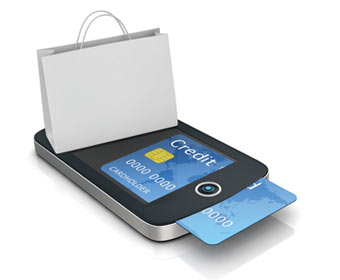Mobile payments go beyond mainstream
According to research by IDC, 1.5 billion smartphones will be in use globally by 2017 and consumers will be doing more than ever on them. As a result, more businesses recognise the importance of delivering quick and seamless mobile payment capabilities to cater to consumers who demand the ability to transact when, where and how they choose.
August 13, 2014

Telecoms.com periodically invites expert third-party contributors to submit analysis on a key topic affecting the telco industry. In this piece Kunaciilan Nallappan, Marketing Director of F5 Networks, looks at mobile payments and some of the security and infrastructure improvements that will help move things along.
According to research by IDC, 1.5 billion smartphones will be in use globally by 2017 and consumers will be doing more than ever on them. As a result, more businesses recognise the importance of delivering quick and seamless mobile payment capabilities to cater to consumers who demand the ability to transact when, where and how they choose.
A growing trend
Gartner’s Forecast: Mobile Payment, Worldwide, 2013 update predicted that worldwide mobile payment transaction values would reach $235.4 billion, a 44 percent increase from 2012’s $163.1 billion, while mobile payment users worldwide will reach 245.2 million in 2013.
For the end user, having the ability to conduct payments on mobile is extremely convenient. For businesses and financial institutions, the convenience and security of mobile payments can bring new revenue sources via e-commerce, and enhance customer loyalty through programs that leverage consumers’ mobile data.
There are two primary types of mobile payments; those made at the physical point of sale (POS), and those in the e-commerce environment, defined as proximity payments and remote payments respectively. Remote payment is when a mobile device is used to access the payment back-end system via mobile communication networks and complete the payment behaviour. Proximity payment is a contactless payment, where a mobile device is used to realise information exchange and complete payment by way of short-range communications technologies.
Opportunity in mobile payments
The hospitality industry has been quick to embrace mobile payment technology as operators seek industry-tailored mobile solutions that improve efficiency, boost profitability and increase guest satisfaction. Case in point: Gaylord Hotels’ poolside ordering and payment uses an iPod Touch, featuring mobile POS software and an attachment that allows the server to scan, collect payment and print a receipt from anywhere, so guests never have to leave their cabana.
Retailers in the US are also jumping on the bandwagon. Walmart, Target, and a dozen more retailers have teamed up as the Merchant Customer Exchange, to develop a mobile application that allows customers to pay for goods at participating stores’ registers with their smartphones. The app also gives users exclusive coupons and deals.
A personal experience that struck me as game changing was in the public transportation sector. While in a taxi in the USA, I was able to make payment using the taxi drivers iPad, which came equipped with payment software and an attachment to swipe cards. Upon approval, an email receipt was sent to me.
Security of mobile payments
The future of mobile payments offers unrivalled opportunity for businesses, but ensuring its security is vital to maintain consumers’ trust. End users expect secure access to services from any device. With application security growing increasingly threatened, fraud prevention in this area is top priority. Ultimately, non-intrusive clientless verification of fraud activity helps both businesses and consumers.
Research and Markets expects the fraud detection market to grow from $3.61 billion in 2013 to $7.55 billion by 2018, driven by increasing cyber-attacks across multiple sectors, including financial services, online retail, travel, ticketing, entertainment, social networking and gaming.
Before businesses can take advantage of the opportunities around mobile payments, they must consider fraud protection to protect against advanced mobile threats, preferably one that integrates with native mobile applications to protect smartphone users. Especially pertinent in online banking and e-retail, this will detect malware and jail broken devices. It will also protect against key loggers and fraudulent applications, while ensuring information intercepted by malicious programs will be rendered useless to an attacker.
Cybercrime costs businesses approximately $400 billion worldwide. In the UK, the cost of cyber-crime amounted to $11.4 billion (£6.8 billion) in 2013, or 0.16% of GDP, a report from the Centre for Strategic and International Studies (CSIS) shows. These staggering statistics highlight the growing need for a robust security infrastructure beyond traditional firewalls, which were never built for the mobile age.
IT security infrastructure needs to be augmented with state of the art defences like fraud detection software to ensure necessary protection for mobile transactions and sophisticated user access controls. It is important to rethink security and enhance infrastructure, along with taking into account the needs of the demanding smartphone user who wants to securely work and play on his/her device of choice. The most important thing to remember is that protecting your business is your top priority. Mobile payment services are a great way to deliver a quick and seamless service, but can also cause issues if not managed correctly.
 About Kunaciilan Nallappan
About Kunaciilan Nallappan
Kuna is the Marketing Director of F5 Networks, where he is responsible for driving solution marketing strategies and programs to increase F5 brand awareness and market penetration in the Asia-Pacific region. With an extensive background in business intelligence and technology state of play, Kuna steers solution go-to-market strategies for F5 in Asia Pacific. Kuna has more than 15 years experience in the IT and telecommunications industry having done sales, channel & product management and marketing. Kuna’s rich experience and knowledge of application delivery, security and storage makes him a frequent speaker in regional and local conferences in addition to the various media engagements throughout Asia-Pacific.
Read more about:
DiscussionAbout the Author(s)
You May Also Like








.png?width=300&auto=webp&quality=80&disable=upscale)


_1.jpg?width=300&auto=webp&quality=80&disable=upscale)


.png?width=800&auto=webp&quality=80&disable=upscale)